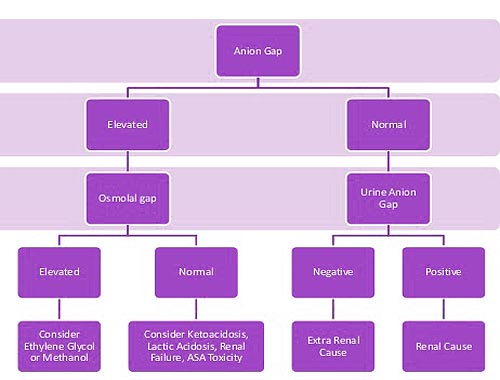Anion gap disorder (High anion gap metabolic acidosis)
Increased anion gap is a disorder of electrolytes. High anion gap metabolic acidosis is a form of metabolic acidosis characterized by a high anion gap. The anion gap is the difference in the measured cations and the measured anions in serum, plasma, or urine. The magnitude of this difference (i.e. "gap") in the serum is often calculated in medicine when attempting to identify the cause of metabolic acidosis. If the gap is greater than normal, then high anion gap metabolic acidosis is diagnosed. The term "anion gap" usually implies "serum anion gap", but the urine anion gap is also a clinically useful measure. It is calculated by subtracting the serum concentrations of chloride and bicarbonate (anions) from the concentrations of sodium and potassium (cations): = ([Na+] + [K+]) - ([Cl-] + [HCO3-]) Omission of potassium has become widely accepted, as potassium concentrations, being very low, usually have little effect on the calculated gap. This leaves the following equation: = [Na+] - ([Cl-] + [HCO3-])
